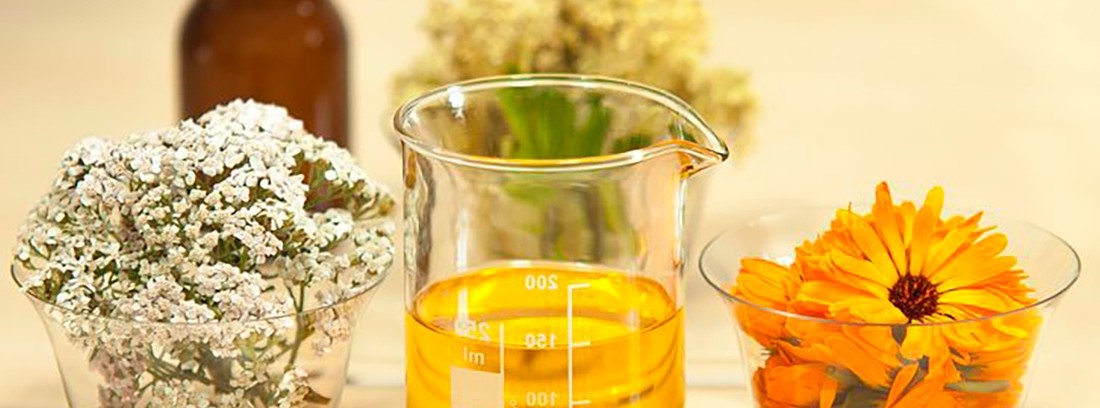Allied plants of women

In all these stages there are typically female disorders, such as (abdominal pain on the days of bleeding) and premenstrual syndrome (physical and emotional alterations the days before the menses) linked to menstruation; the possible complications of childbirth or rising milk when having children; or the symptoms associated with menopause such as hot flashes, sweats, emotional disorders and a greater propensity for cardiovascular, metabolic and bone diseases mainly.
Physiology also marks the possible appearance of serious diseases specific linked to female organs, such as cancers of the breast, cervix, ovaries or uterus. Other problems are not so exclusively female, but they do affect women more, such as cystitis, heavy legs or irritable bowel, to give a few examples.
Medicinal plants in women's care
Since ancient times, it was observed that the rhythm of the approximately 28 days on average is close to that of the lunar phases (27.3 days), so it was believed in a firm relationship between the two, to such an extent that menstruation they were called "moons." The woman lived integrated into nature, feeling part of it and in it she sought her remedies. All this resulted in They will look for a remedy for their ills in the plants, joining its collection to magical rites. A) Yes, the night of San Juan, the women went out to collect plants that they considered that with their "magic" they could alleviate their ills, such as sage, yarrow, meadow chrysanthemum, ground ivy, butcher's broom, mugwort, hypericum, valerian, rue, laurel or verbena , among other. Although some of the plants used in ancient times have not shown their usefulness for their intended purposes, the scientific studies show that today medicinal plants are still a valid option and effective for women's care and can help alleviate many female disorders.
For menstrual pain
Plants with emmenagogue action are useful, that is, those that facilitate menstrual flow, such as the roots of common angelica (Angelica archangelica) and Chinese angelica (Angelica sinensis), parsley root (Petroselinum crispum) or sage leaves (Salvia officinalis). An infusion of 1 to 3 times a day from a few days before the rule, will help to avoid pain. For their part, the flower heads of different types of chamomile (Matricaria recutita, Anthemis nobilis) collaborate with the action of emmenagogue plants by reducing spasms. Other useful plants are pain relievers, such as willow or meadowsweet.
Chinese angelica tea: with 1 tablespoon of roots per cup of water, cook for about 2 to 5 minutes, remove from heat and let stand for 5 to 10 minutes. Take 1 to 3 cups a day.
To relieve premenstrual syndrome
One plant stands out above the others, the chasteberry (Vitex agnus castus). Several clinical studies have shown that the fruits of the chasteberry can relieve physical symptoms (tension and pain in the breasts, fatigue, headache, swelling, etc.) and emotional (irritability, mood changes) of premenstrual syndrome, discomfort that appears in many women one or two weeks before the rule. It is advisable to take 20 mg / day of the extract, in the morning for several months.
Another useful plant is the evening primrose (Oenothera biennis L). The oil from its seeds is useful when the main symptom of PMS is tension or pain in the breasts. It comes in the form of pearls or soft gelatin capsules and it is recommended to take 0.5 to 2 g per day during the second half of the menstrual cycle.
For menopause
Two plants have shown great utility, soybeans and black cohosh. From soy (Glycine max (L.) Merr.), Isoflavones are extracted that mainly relieve hot flashes and prevent cardiovascular and bone disorders (osteoporosis) that appear later. The daily doses are established at 40 to 80 mg daily, divided into one or two doses.
From the black cohosh (Cimicifuga racemosa (L.) Nutt.), The roots are used, and it is indicated at menopause for hot flash relief, sweating, sleep disturbances and nervous irritability. The recommended dose for pre-dosed forms (tablets, capsules, etc.) is 40 to 140 mg per day in one dose or divided into two doses (morning and evening). In both cases (soy and black cohosh) some women require several months of treatment to obtain the desired effect.
For cystitis
Another common problem for women is recurrence, more frequent than in men due to their anatomy, since the communication duct between the bladder and the exterior is shorter and straighter, and the space between the urethra and the anus is very reduced. All of this contributes to the intestinal bacteria enter the urinary tractor. To prevent and avoid relapses, the American cranberry (Vaccinium macrocarpon Ait.), Contains substances called proanthocyanidins (PAC) that bind to bacteria, preventing them from adhering to the urinary tract, so these bacteria are excreted by the urine without being able to colonize.
When the urine infection has already occurred, it should be treated with antibiotics urinary but joint treatment with cranberry has been shown to reduce relapses and prevent the onset of cystitis in prone women. Commercial preparations have different concentrations, therefore, for their dosage, the indications specified on the product must be followed.
- Chasteberry stands out when it comes to alleviating the symptoms of PMS.
- Soy and black cohosh are effective in menopausal disorders (hot flashes, sleep disorders, irritability, prevention of cardiovascular and bone disorders ...)
- The American cranberry is used in case of cystitis to prevent and avoid relapses.
Informative note: the contents included in this section offer information related to existing therapies explained by specialists with experience in the field with an informative objective. MAPFRE does not intend in any way to position itself on its suitability or expressly promote its use.
Maria Jose Alonso OsorioMember of medicinal plants and homeopathy of the College of Pharmacists of Barcelona
(Updated at Apr 14 / 2024)